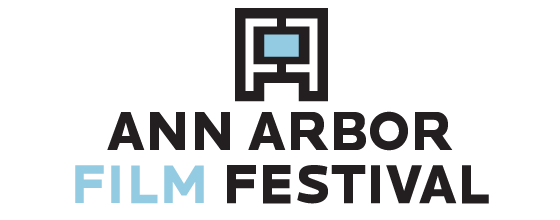"Even though it is abbreviated, these three days represent what is happening in contemporary moving picture culture,” said David Dinnell at the opening of the 52nd Ann Arbor Film Festival Tour in Montreal. “Even just tonight contains most of the field’s genres,” he continued. “The nine pieces from six countries we are presenting include computer and hand animation, photography, documentary, and narrative works.”
This tour is meant to bring the films present at the Ann Arbor Film Festival—the oldest experimental film festival in North America—to people who may want to see these unique works but cannot travel to the festival itself. The second day of the festival tour, held at Cinematheque Quebecoise, presented—as promised—an impressive diversity of works over 86 minutes in differing styles, ranging in themes from depressing to humorous.
-
bbrraattss

The showcase began with the glitchy, uneasy bbrraattss by Ian Cheng (3 minutes), a computer animated piece consisting of only a hunter and rabbit spastically bumping into each other in a barren, white emptiness. With hands that never stop unpredictably spinning, completely inexpressive expressions, and a soundtrack of only a deep bass resembling a monster’s low snore, this piece informs the viewer that they are about to experience something not commonly found in theatres.
-
Velocity

Velocity by Karolina Glusiec (6 minutes) followed this jarring piece with its soothing, impressionistic hand-drawn animation of objects and ideas. The narrator described several personal memories and theories on the faculty of memory while showing doodle-type drawings of these ideas, going into detail when the description becomes specific, but showing only an outline when venturing closer to theoretical thought. A wonderful foil to the anxious opening, the audience is given the appropriate opinion that they will not be able to predict what happens next in the festival.
-
The Blazing World

Next, a longer film, The Blazing World by Jessica Bardsley (20 minutes) explored the link between kleptomania and depression in teenage and adult women. Using only clips from existing films, along with deeply personal narration and subtitles, Bardsley discusses her own experience with both issues and their connection to Winona Ryder—who first portrayed a character similarly struggling in Girl, Interrupted (1999) then experienced them in her own real life. A bit long and repetitive, this “video essay” did not deliver any closing lesson or story, merely providing stories and thoughts until it abruptly ended.
-
Cold Open

Cold Open by Seamus Harahan (12 minutes) pursued a similar theme of monologues exploring personal vice, but this time concentrating on alcoholism. While a man and his wife spoke on his problems related to alcohol dependence, the film presented rural scenes of life in Belfast, the home of the speakers. With even less connection between the visual and audio elements than the previous piece, this also lacked cohesion and seemed to focus too much on finding a metaphorical connection between words and image while ignoring anything for the audience to be physically attuned to.
-
Lagos Island

The next three short films explore a location in unique styles. DER SPAZIERGANG by Margaret Rorison (3 min) concatenates a year’s worth of short video clips and still images into a rapid slideshow of Berlin streets, accompanied by field recordings of the streets augmented with a handmade beat sequencer. Karimah Ashadu’ Lagos Island (4 min) showed the homes of inhabitants of the titular island along the coast by encasing the camera in a wheel made of debris found on-site and rolled along a path. Although ingenuitive, this technique can make the audience dizzy as they are rolled along, inciting confusion. Mount Song by Shambhavi Kaul (9 min) explored a jungle set with correct angles and effects to make it seem truly alive. Smoke pours in, lights shake, and a breeze blows the foliage as the camera pans a convincing ‘natural’ space.
-
Encounters with Your Inner Trotsky Child

The funniest film was easily Encounters with Your Inner Trotsky Child by Jim Finn (21 min), which satirized high school education films with a deadpan narration and cheesy graphics instructing the viewers in the proper process for freeing their ‘Inner Trotsky Child’ and expelling the evil communist and capitalist influences within them. Although well done, this piece goes on a bit too long and the joke wears thin.
-
The Great Rabbit

The final film, The Great Rabbit by Atsushi Wada (7 min), is a stimulating, cyclic animation of a series of boys receiving balls from a rabbit on a chair, then being attacked by animals and connecting to other characters until eventually returning to receive another ball. Beautifully drawn, this calm piece provided a fitting end for the chaos and surprise of the evening.









